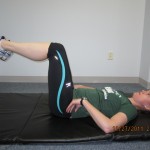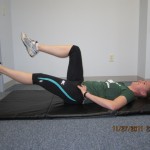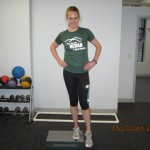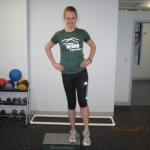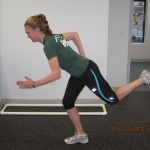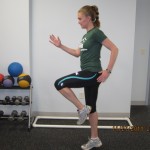Build a Base for a Better Race | Sports Medicine
“Not again!” Every runner has felt that disappointment when his or her long run is cut short by yet another injury—this time, perhaps, a sharp pain on the outside of the knee. This time, the injury is particularly frustrating, as it occurred despite making every effort to avoid past training errors. The plan started with getting fit for the right shoes, then working with a coach to develop a lower-mileage program, following a regular Nautilus strengthening routine, and making time for weekly yoga and swimming. Yet, the outcome was the same as in years past—hobbling home with an injury.
The secret to staying injury-free lies in what you do before your race training actually starts. Too many runners enter their training cycle with functional weakness, which manifests in injuries as the mileage increases. Functional strength utilizes the neuromuscular system to support and stabilize the body during movements that occur in daily life (i.e., self-care, work, or leisure activities). Runners may be able to squat 100 pounds or leg press 150 pounds, but this has little carryover in later miles when form starts to break down, the pelvis becomes unstable, and knees start to collapse in toward each other. The legs cannot utilize the type of strength that was built up while lying down pushing those 150 pounds away from the body.
Functional strengthening for runners should focus on the muscles surrounding the pelvis—particularly the glutes, lower abdominals and pelvic floor muscles. The pelvis and spine provide a base for all functional movements. If that base is not stable, the pelvis will start to rotate, tilt, or drop excessively (particularly as fatigue sets in) and may cause low back pain, SI (sacroiliac joint) problems, or a variety of lower extremity injuries. The glutes control the rotation and movement of the entire leg, and their weakness can lead to injuries such as IT band syndrome, patella tendinitis, or pain related to abnormal tracking of the knee cap.
A runner only has one foot on the ground at a time, and should therefore be doing exercises for pelvic stability and hip strength on one leg. These exercises do not require any special equipment, but they do require attention to form. The goal is to develop muscle memory that will carry over to running. It is important to note that it takes six to eight weeks for a neuromuscular adaptation (change in functional strength) to take place. Making time for these exercises in the off-season will allow sufficient time to improve strength and stability and prevent injuries as mileage increases for race-specific training. The exercises then become more of a maintenance program throughout the training season.
Taking the time to build a base of abdominal and hip functional strength will help prevent injuries and therefore allow consistent training, which will result in a better race performance. Each runner has different areas of weakness and may want to consider an injury screen or a biomechanical running evaluation to help determine an individualized exercise program.
Here are a few exercises to develop functional pelvic, abdominal, and hip strength and control.
